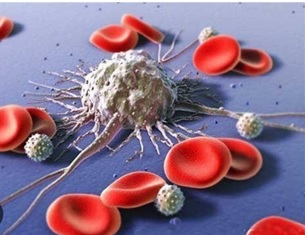
Acute Lymphoblastic Leukemia (Blood Cancer)
All blood cells in the body originate from the bone marrow. The bone marrow is a sponge-like substance inside the bones. This part of the body produces cells or stem cells. Leukemia is one of the most common cancers among children.
Signs of Leukemia
Leukemia usually starts slowly and gradually with an increase in blast cells or immature white blood cells in the blood before it becomes severe. Most of the external symptoms of the disease are caused by unhealthy blood cells, such as:
Pale skin
Night sweats
Fever
Shortness of breath and fatigue
Bruising easily
Swollen lymph nodes
Unintentional weight loss
Joint and bone pain
Purple skin rash (petechiae)
Frequent infections in a short period of time
Abdominal pain due to liver or spleen enlargement
Abnormal and excessive bleeding from various parts of the body such as gums or nose
In some people, unhealthy blood cells enter the central nervous system through the blood. In this case, the symptoms of the disease will be related to the brain and nervous system, such as:
Headache
Seizures
Nausea
Blurred vision
Dizziness
Diagnosis of Cancer
Various tests are used to diagnose cancer:
Blood Test
A blood test can show a high number of white blood cells and a low number of red blood cells and platelets. This test can also detect the presence of blast cells. As mentioned earlier, blast cells are immature blood cells that are found in the blood of people with cancer.
Bone Marrow Test
In a bone marrow test, a needle is used to take a sample of bone from the pelvic bone or sternum. The sample is examined for the presence of cancer cells. Laboratory doctors classify blood cells based on their size, shape, and other genetic or molecular characteristics. They also look for specific changes in cancer cells that started from B lymphocytes or T lymphocytes. This research helps doctors choose the right treatment plan.
Imaging Tests
X-rays or Computed Tomography Scan (CT scans) are other methods of diagnosing ALL blood cancer. Ultrasound can also be helpful in this way. These tests are used to see if the cancer has spread to the brain and spinal cord or other parts of the body.
Cerebrospinal Fluid Test
A cerebrospinal fluid test is used to obtain a sample of the cerebrospinal fluid in the spinal cord. This fluid is found in the brain and spinal cord. The test is used to see if the cancer has spread to the spinal cord.
Treatment Methods
a) Chemotherapy
Chemotherapy uses drugs that kill cancer cells. This method is usually used as induction therapy for children and adults.
b) Radiation Therapy
Radiation therapy uses powerful rays such as X-rays or protons to kill cancer cells. If cancer cells have reached the central nervous system, the doctor will prescribe radiation therapy.
c) Bone Marrow Transplant (Stem Cell Transplant)
It is used in the consolidation and maintenance phase of treatment for those who have had a relapse of the disease or want to prevent its recurrence. This method allows people with ALL blood cancer to rebuild healthy bone marrow in their bodies again. This process is done by transplanting bone marrow from a healthy person to the patient.
d) Clinical Trials
These are trials that test new treatments and new ways to use existing treatments. However, these approaches are still in the experimental stage and have their own potential risks. You should talk to your doctor in detail about the benefits, drawbacks, and potential risks of such treatments before agreeing to them.
Potential Risk Factors for Leukemia
Having a brother or sister with leukemia
Exposure to X-rays before birth
History of taking medications that weaken the immune system
Having certain genetic disorders such as Down syndrome
Possible Signs of Childhood Leukemia
Fever
Easy bruising or bleeding
Petechiae (tiny red spots on the skin)
Bone or joint pain
Painless lumps in the neck, armpits, abdomen, or groin
Weakness or fatigue
Loss of appetite



